Patrick Meier Seminar: Digital Humanitarians
Recently the UC Digital Humanities Programme and CEISMIC hosted a seminar with Dr Patrick Meier about the rise of Digital Humanitarians. Meier discussed how Digital Humanitarians are contributing to the response to worldwide humanitarian crises by creating and using new and innovative digital technologies. His seminar discussed the challenges faced by humanitarian organisations in the digital age, and some of the projects that have been created to deal with these challenges.
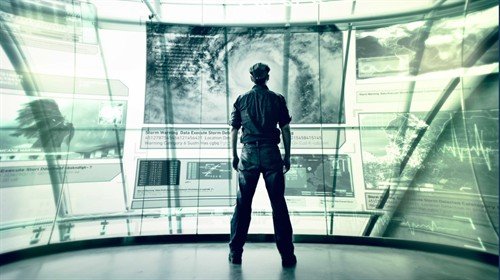
Meier has more than 12 year’s professional experience in humanitarian technology. Currently he is the Director of Social Innovation at the Qatar Computer Research Institute (QCRI) and is part of the Innovation Team of the United Nations Secretary-General’s World Humanitarian Summit (WHS). He is author of the blog, ‘iRevolutions’ and has recently published a book, “Digital Humanitarians: how big data is changing the face of humanitarian response”.
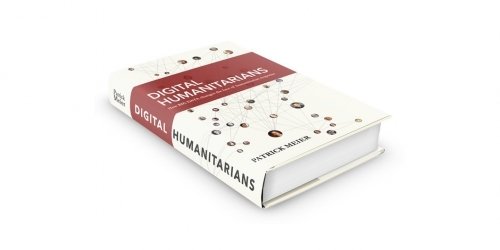
An image of Patrick Meier’s book. Source: http://www.digital-humanitarians.com/
Digital Humanitarians are dedicated volunteers and professionals who create and use online technologies to support global humanitarian efforts. While in the past humanitarian organisations had very little access to information, today they are faced with a flood of information after a disaster, often driven by social media or satellite imagery. Digital Humanitarians help to gather and process this information, ensuring that it can be used by aid organisations on the ground.
In this seminar, Meier talked about the ways Digital Humanitarians have combined crowd sourcing solutions with machine learning to process large quantities of data for humanitarian organisations. Sets of data are assessed and tagged by volunteers and later analysed by sophisticated software. An example of this is MicroMappers, which offers a collection of ‘Clickers’ pre-loaded with photographs, videos, or aerial and satellite imagery of disaster zones. Clickers are web-based applications which allow users to answer simple questions about the presented data, such as whether there is damage in a photograph or aerial image, or what location a tweet refers to. These human-generated answers are then fed through AIDR, an Artificial Intelligence engine, which compares similar results to learn how to classify material itself. Once enough information has been filtered or geo-tagged, AIDR will start to auto-classify material en masse, speeding up the classification process. AIDR is also able to hold onto the learnings from each disaster, meaning that it improves each time it is used. This also means that any incoming data can now be processed by AIDR immediately after a disaster, speeding up the classification process and getting important information to humanitarian organisations sooner. By using applications such as MicroMappers, Digital Humanitarians are able to effectively find a needle in a haystack, identifying the key pieces information that humanitarian organisations need, in overwhelmingly large and diverse sets of data.
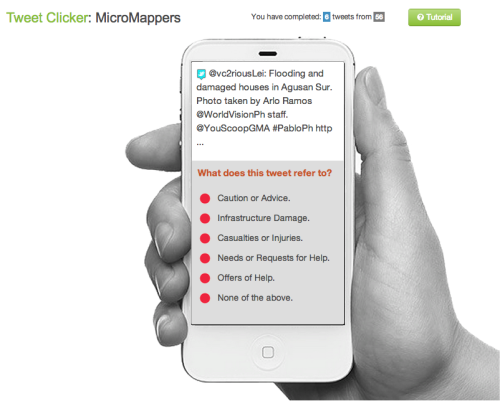
A screenshot of a MicroMappers Tweet Clicker. This clicker asks users to classify tweets using six different categories. Source: http://irevolution.net/2013/09/18/micromappers/
The most recent MicroMappers project supported recovery efforts in Vanuatu following Cyclone Pam. Volunteers were shown a selection of aerial images and asked to trace the outline of any buildings they could see. They were then asked to judge the degree of damage on a scale from no damage to severely damaged. Volunteers from 36 different countries analysed over 2500 unique high-resolution aerial photographs, tracing 1698 destroyed houses, 1298 partially-damaged houses, and 3967 houses with little to no damage. This helped the World Bank rapidly assess which areas of Vanuatu were in most urgent need of assistance. It also ensured that areas with no communication networks would get the help they need, despite being unable to contact humanitarian organisations.
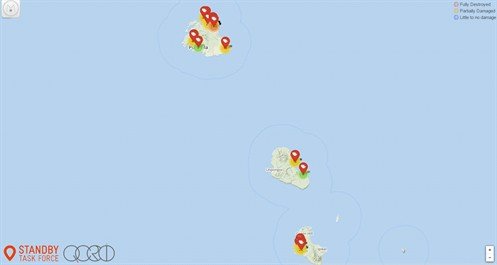
A screenshot of the results of the Pam Cyclone Micromapper laid over a map of Vanuatu.
Source: http://maps.micromappers.org/2015/pam/aerial/#close
Meier also talked about the way that crowd sourcing has been used to help verify information gathered by news media during humanitarian crises. During a disaster misinformation can be widespread with rumours and false reports circulating on social media. Investigative journalists have strategies to verify the accuracy of these reports, but are often overwhelmed by the quantities of information generated during humanitarian crises. Digital Humanitarians can help with this process by working to verify unconfirmed reports during major disasters. This can be done on websites such as Verily, which allow humanitarian or news organisations to submit verification requests. These requests are given in the form of Yes-or-No questions, such as: “Has the Medway Street Bridge been destroyed by the earthquake?” or, “Is it true that aftershocks can still be felt in Christchurch?”. Verily then communicates these questions through social media and their own email lists, encouraging volunteers to scour the web for clues like digital detectives. Volunteers are asked to vote either ‘yes’ or ‘no’, and to explain how they came to their conclusion. In this way, Verily taps the collected knowledge of the crowd, providing news agencies with local and specialised knowledge to build a more accurate picture.
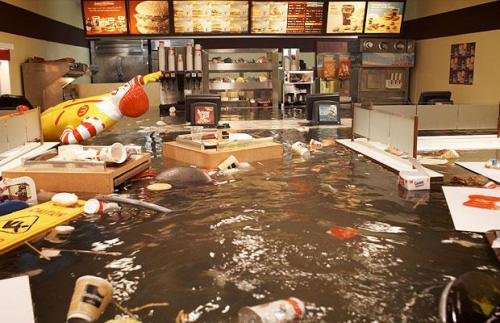
Still from "Flooded McDonald’s", a video by Superflex
During Hurricane Sandy, this image was circulated around the web. Many believed that this was a real-life McDonalds and that the flooding was caused by the hurricane. In reality, this is a life-sized replica of a McDonalds restaurant which was flooded deliberately for a film.
In some ways Digital Humanitarians aredigital humanities scholars who have had to respond to urgent real-world problems. They hold interests in traditional humanities disciplines such as history and social science, and use computational-methods such as data mining, data visualisation, and information retrieval to find solutions. One of the important attributes of a Digital Humanitarian is not just their willingness to help during a humanitarian crisis, but also their nuanced understanding of people, places, cultures, and languages. It is these skills that projects such as MicroMappers and Verily are tapping into, and which allow Digital Humanitarians to envision new tools and improve upon those that already exist.
CEISMIC and the UC Digital Humanities Programme would like to thank Patrick Meier for his enlightening talk and wish him the best with his future endeavours. Anybody interested in finding more about this topic should read his blog at http://irevolution.net/
